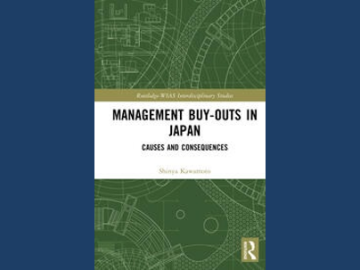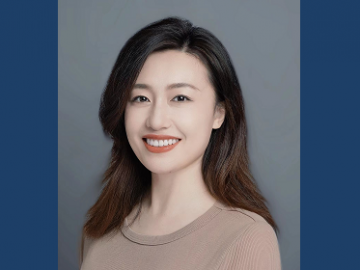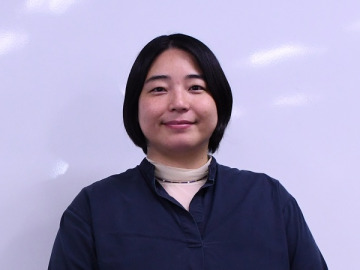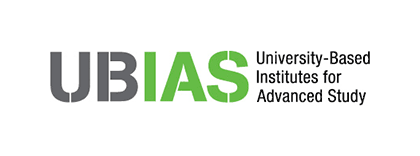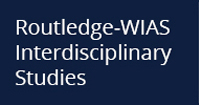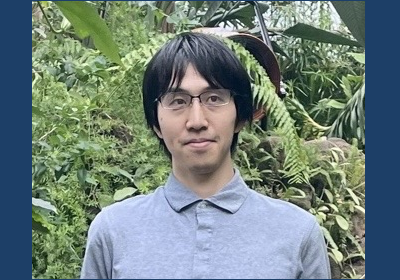
SHIRAI Tatsuhiko, Assistant Professor
How I became involved in quantum technology research
We are surrounded by materials made up of atoms and molecules. Let’s think of an atom or molecule as a Lego brick. Various shapes are realized by different combinations of these Lego bricks from living things to buildings. I am interested in the phenomena of emergence, which occur when a number of these individual elements come together, and my research uses statistical mechanics and quantum computational science. Statistical mechanics aims to elucidate the properties of materials that emerge when many Lego bricks come together. It is interesting that the H2O molecules can form different states: ice, water, and steam.
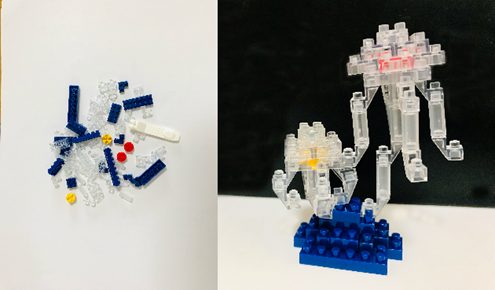
Fig. 1 Collective phenomena when individual elements come together (https://www.pony-t.co.jp/categorize/toys/page/9/)
On the other hand, quantum computational science focuses on solving problems by appropriately combining many Lego bricks. These two fields share a common goal of understanding the properties of systems composed of many individual elements. I aim to pioneer an interdisciplinary field between statistical mechanics and quantum computational science. Specifically, I am interested in researching methods to efficiently use quantum computers made up of Lego bricks with somewhat unusual properties called quantum bits (qubits) and employing quantum computers to explore problems in statistical mechanics.
I obtained my degree in the field of statistical mechanics under Professor Seiji Miyashita (April 2011 – March 2016). Then I conducted research in an interdisciplinary field of material science and mathematics under Assistant Professor Takenobu Nakamura (April 2016 – December 2016). I vividly remember Dr. Nakamura saying, “Research in material science allows you to converse with people from any background”. These words made me someday want to utilize my expertise to conduct research with people from different backgrounds. Then I was introduced to the field of quantum computation science by Associate professor Shu Tanaka, and took the opportunity to engage in this field with Professor Nozomu Togawa, who specializes in information engineering (April 2019 – March 2024).
Active research is currently being conducted globally as quantum technology may dramatically transform various aspects of modern society. For example, current research aims to realize quantum sensors with high sensitivity and high spatial resolution, cryptography technology using quantum states, high performance quantum devices, and quantum computers capable of solving complex problems. One area where the use of quantum computers is highly anticipated is combinatorial optimization. Combinatorial optimization involves finding the best solution that minimizes or maximizes an objective function while satisfying constraints (rules). These problems appear in various fields, including logistics, information and communications, drug discovery, and finance.
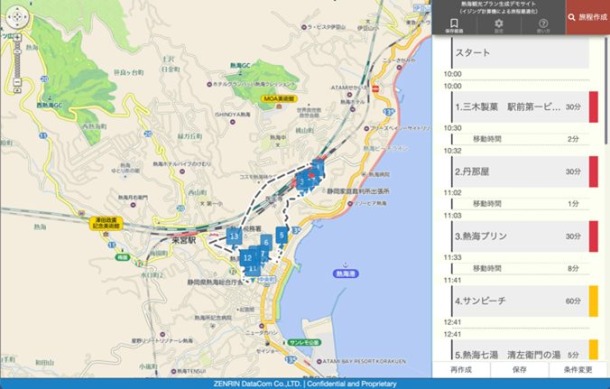
Fig. 2 Tour plan generation application
(http://at-lab.its-mo.com/trip/atami/)
Figure 2 demonstrates an application that solves a combinatorial optimization problem to generate sightseeing plans for Atami city. This application was developed in collaboration with Zenrin DataCom Co., Ltd. and our group. Using a quantum-inspired computer (a computer that mimics a quantum computer and has potential to be replaced by a quantum computer in the future), the application calculates the optimal travel route that maximizes satisfaction under various preferences (constraints) such as travel themes, facilities, tourist spots, gourmet options, and transportation. This illustrates the vision of a future quantum world and utilization of quantum technology in our daily lives.
Research toward the practical applications of quantum technology
It is believed that calculations performed on quantum computers will take an extremely long time on conventional computers or supercomputers. As such, quantum computers are expected to solve problems that have been difficult to tackle until now. For example, a quantum algorithm to rapidly perform prime factorization (e.g.,2024=2×2×2×11×23) has been proposed. This algorithm requires error-free execution of complex computations on quantum computers. However, the error in current quantum computers limits feasible applications.
To overcome the current limitations of quantum computers, many researchers are developing hardware to solve practical problems using quantum computers. It is now possible to perform calculations with various types of quantum computers with tens to about a thousand qubits. For example, the quantum computer “Toshiko”, which was developed by Oxford Quantum Circuits in collaboration with Waseda University, has 32 qubits. Furthermore, the vision of a quantum future society advocated by Japan’s Cabinet Office predicts that quantum computers with about 1,000 qubits will be used more accessible by 2030. The remarkable progress in the hardware of quantum computers and the establishment of environments to use them are very exciting.
Another critical area to realize practical applications using quantum computers is the development of software. When solving combinatorial optimization problems with quantum computers, software to explore the ground state of the Ising model is often employed. The Ising model is a function of multiple binary variables (called spin variables), and the value (called energy) changes according to the combination of spin variables. Spin variables take values of either +1 or -1. Figure 3 (left) shows an energy landscape of the Ising model with two spin variables, where up and down arrows represent spin variable of +1 and -1, respectively. This software can be utilized by expressing the optimal solution to a combinatorial optimization problem as the ground state of the Ising model (the combination of spin variables that minimizes energy).
However, solving practical combinatorial optimization problems with quantum computers remains a challenge. One factor is the existence of many local minimum solutions in the energy landscape of the Ising model. A local minimum represents a solution where the energy is locally lower compared to its surrounding solutions (Fig. 3 (left)). To reach a lower energy solution from a local minimum solution, it is necessary to pass through solutions with higher energy. However, making a transition from a lower energy solution to a higher energy solution is generally difficult, which deteriorates the accuracy of algorithms solving combinatorial optimization problems. My research focuses on developing technologies that enhance quantum software performance and make solving combinatorial optimization easier. One of my studies investigates methods to transform the energy landscape provided by the Ising model (Fig. 3) and elucidate a mechanism to efficiently escape from local minimum solutions.

Fig. 3 Technology for transforming energy landscape to solve combinatorial optimization taken from press release in Waseda university (https://www.waseda.jp/top/en/news/75957)
Future aspirations
Quantum technologies have potential to realize advances that are impossible today across various fields. A significant feature in the field of quantum technology is that researchers, engineers, and companies with diverse backgrounds contribute knowledge and collaborate on research and development. I originally conducted theoretical research in statistical mechanics. Since moving to Waseda University in 2019, my research activities integrate the knowledge of statistical mechanics into the field of information engineering. Being stimulated by different ways of thinking allowed me to approach my research from new perspectives, which has been an interesting and valuable experience. Additionally, Waseda Institute for Advanced Study (WIAS) brings together researchers with a wide range of backgrounds. By leveraging such opportunities and drawing inspiration from various fields, I aim to pioneer an interdisciplinary field of statistical mechanics and quantum computer science.

